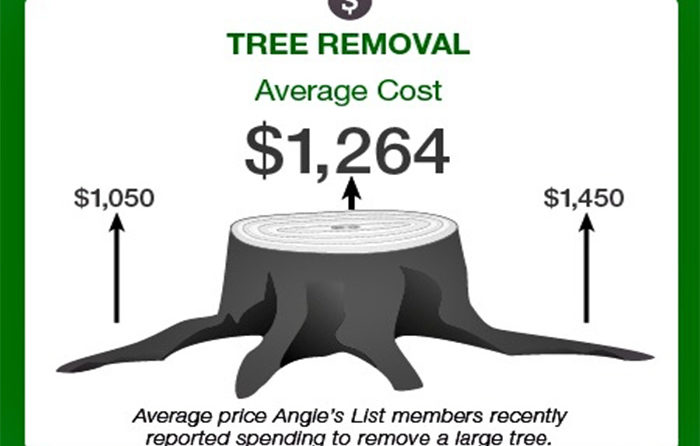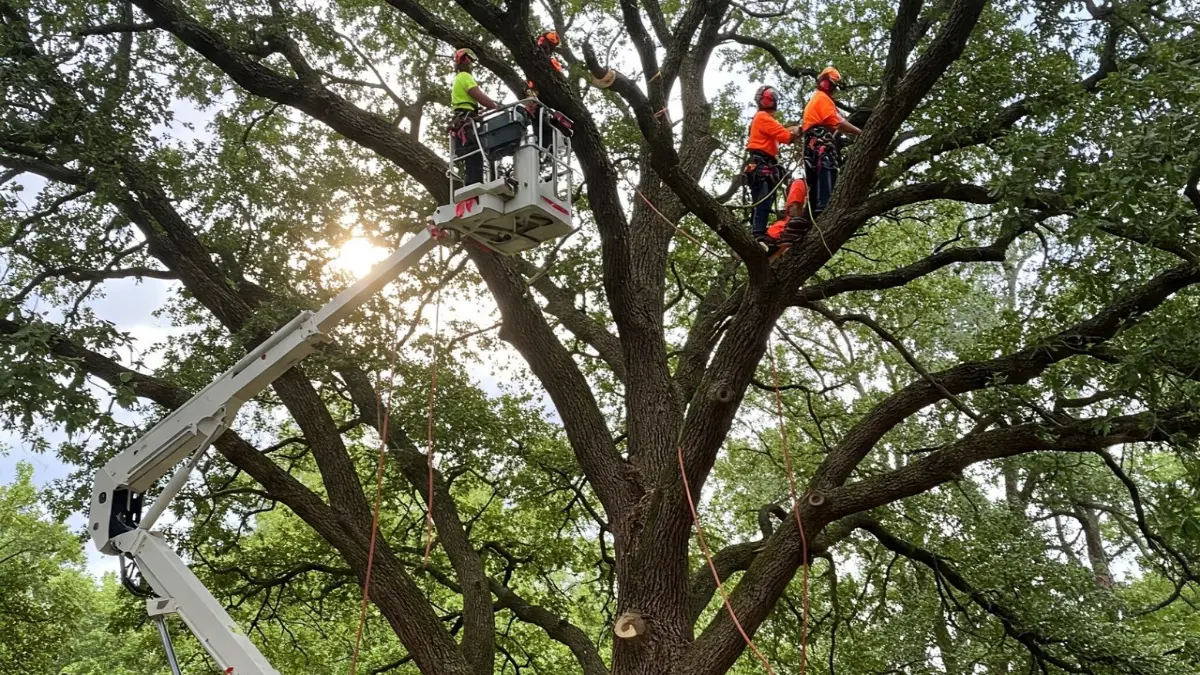Featured
Table of Contents
- – Tree Removal Price Comparison In Milwaukie, OR
- – Typical Tree Clearing Prices In Milwaukie, OR
- – Milwaukie, OR Tree Clearing Savings Tips
- – Milwaukie, OR Tree Removal: Package Deals
- – Top-Rated Tree Removal In Milwaukie, OR: Pric...
- – Milwaukie, OR Tree Removal Cost Breakdown
- – Is A Tree Trimming Expensive In Milwaukie, OR?
- – Milwaukie, OR Tree Service Transfer Costs
- – Get Instant Tree Trimming Estimates In Milwa...
- – Milwaukie, OR Stump Removal: Price Guide
- – How Much Should You Pay For A Tree Service I...
- – Budget Expectations For An Tree Clearing In ...
- – Milwaukie, OR Arborist Cost Factors
- – Extended Tree Clearing Service Plans In Milw...
- – What You'll Pay For An Arborist In Milwaukie...

The subsections listed below supply more detailed info about pricing, including an average variety for each. TypeAverage Removal CostPineConiferPalmMagnoliaArborvitaeAshCedarSweet GumEucalyptusSycamoreCypressOakMaplePoplar You can expect to pay between to eliminate a pine, depending upon its size. Eliminating a pine is among the more inexpensive tasks unless it is one that has been around for several years and is quite big.
Tree Removal Price Comparison In Milwaukie, OR
Pines also have a tap root that grows deep into the soil, which can show to be more challenging to remove. The process itself includes an expert cutting the tree, clearing the base, cutting the surface area roots, getting rid of the stump, and lastly dealing with the soil. Without an expert hand, you risk leaving pine seedlings behind, which will fall from the roots of distressed pines.
Typical Tree Clearing Prices In Milwaukie, OR
The U.S. national average for conifer removal is approximately to have the conifer cut down, hauled away, and the stump ground or eliminated entirely. Conifers are typically easier to get rid of, and even though they can grow rather high, they do not cost a fortune to eliminate. Conifers consist of pine, spruce, fir, and juniper trees.
Milwaukie, OR Tree Clearing Savings Tips
While conifers are stunning, they kill native plants and certain types of lawn (stump removal). The typical price of palm elimination depends on the height as much as the type, ranging from.
Milwaukie, OR Tree Removal: Package Deals
That is why it is essential to understand which type you are getting rid of. While you do not require an herbicide to kill a palm tree, there are some actions your elimination specialist will have to take to make sure the task is done properly. There are 2 methods they can eliminate them: by slicing them down or digging them up.
Top-Rated Tree Removal In Milwaukie, OR: Pricing
From there, they remove the real tree and then the stump. Expect to pay between to remove this type of tree, depending on the specific size and information of the task.
Milwaukie, OR Tree Removal Cost Breakdown
There are 3 types: green, white, and black ash. White ash is known for its lots of colors. With its gray-tinged bark, its leaves are green or purple in the spring and golden yellow or purplish-red in the fall. They take pleasure in moderate environments and lots of sun. The green ash is named such due to its green or yellow foliage.
Is A Tree Trimming Expensive In Milwaukie, OR?

Due to the variation in height, the elimination price variance is broad from. A coniferous, evergreen tree, the cedar is a sturdy species.
Milwaukie, OR Tree Service Transfer Costs
The growth of false cedars differs from 50 feet approximately 230 feet high. Homeowners may pay anywhere from, depending upon the roots. With star-shaped leaves and stunning fall colors, the sweet gum is considered a medium to big tree. Taking pleasure in full sun, the sweet gum can not endure contamination.
Get Instant Tree Trimming Estimates In Milwaukie, OR
It has a huge root base of 40 to 50 feet, which affects the elimination expense. Generally, it costs between to eliminate a eucalyptus. Eucalyptus are not typical everywhere, however they are rather large compared to others, which is why even the smaller sized ones are so pricey to remove. Initially from Australia, eucalyptus are intrusive plants that grow in thick groves that get native plants.
Milwaukie, OR Stump Removal: Price Guide
There are a handful of ways to do this, consisting of burning, pulling, grinding, or eliminating them with herbicide. Anticipate to pay in between to get rid of sycamores, based upon the height, trunk size, and amount of work involved. Sycamores are one of the largest hardwood trees, typically varying from 60 to 100 feet high and as large as 15 feet.
How Much Should You Pay For A Tree Service In Milwaukie, OR
The first two actions will expose the insides of the tree and cut off the flow of nutrients up the trunk. From there, a professional uses herbicide to kill the tree and cuts down the trunk.
Budget Expectations For An Tree Clearing In Milwaukie, OR
There are various kinds of Cypress trees, but the most prevalent are the Leyland, Arizona, Bald, and Italian. The Bald Cypress grows in swampy or extremely wet locations while the others take pleasure in a dry, warm, or hot environment (tree service). They can grow as high as 80 to 100 feet tall
Milwaukie, OR Arborist Cost Factors

Prone to illness, the Cypress is among the most treasured woods for furniture. The average oak grows to around 60 feet, and depending upon the complexity of the elimination, it costs approximately to remove. The precise size of your oak and the effort needed to fell it affect what you will actually pay for removal together with any additional services like stump grinding.
Extended Tree Clearing Service Plans In Milwaukie, OR
Access to the trees and the roots will likewise impact the total expense. Maples can easily grow up to 100 feet or more and typically cost between to eliminate from your property. The last rate depends on the real height and complexity of the task. Maples are usually among the more expensive trees to eliminate because of their size and the work associated with the removal.
What You'll Pay For An Arborist In Milwaukie, OR
Poplars are giants of the species. Growing as high as 90 to 115 feet, these enormous timbers are primarily found in The United States and Canada and include the aspen, cottonwood, and balsam trees. Boasting an expansive root system, poplars can be expensive to get rid of when totally grown. The process to get rid of trees includes all the cutting and cutting of the branches and trunk, bringing it down to a stump.
Table of Contents
- – Tree Removal Price Comparison In Milwaukie, OR
- – Typical Tree Clearing Prices In Milwaukie, OR
- – Milwaukie, OR Tree Clearing Savings Tips
- – Milwaukie, OR Tree Removal: Package Deals
- – Top-Rated Tree Removal In Milwaukie, OR: Pric...
- – Milwaukie, OR Tree Removal Cost Breakdown
- – Is A Tree Trimming Expensive In Milwaukie, OR?
- – Milwaukie, OR Tree Service Transfer Costs
- – Get Instant Tree Trimming Estimates In Milwa...
- – Milwaukie, OR Stump Removal: Price Guide
- – How Much Should You Pay For A Tree Service I...
- – Budget Expectations For An Tree Clearing In ...
- – Milwaukie, OR Arborist Cost Factors
- – Extended Tree Clearing Service Plans In Milw...
- – What You'll Pay For An Arborist In Milwaukie...
Latest Posts
Cut Costs On A Tree Trimming In New Lenox, IL
High-End Stump Removal Prices In Alma, AR
Common Arborist Costs In Germantown, MD
More
Latest Posts
Cut Costs On A Tree Trimming In New Lenox, IL
High-End Stump Removal Prices In Alma, AR
Common Arborist Costs In Germantown, MD